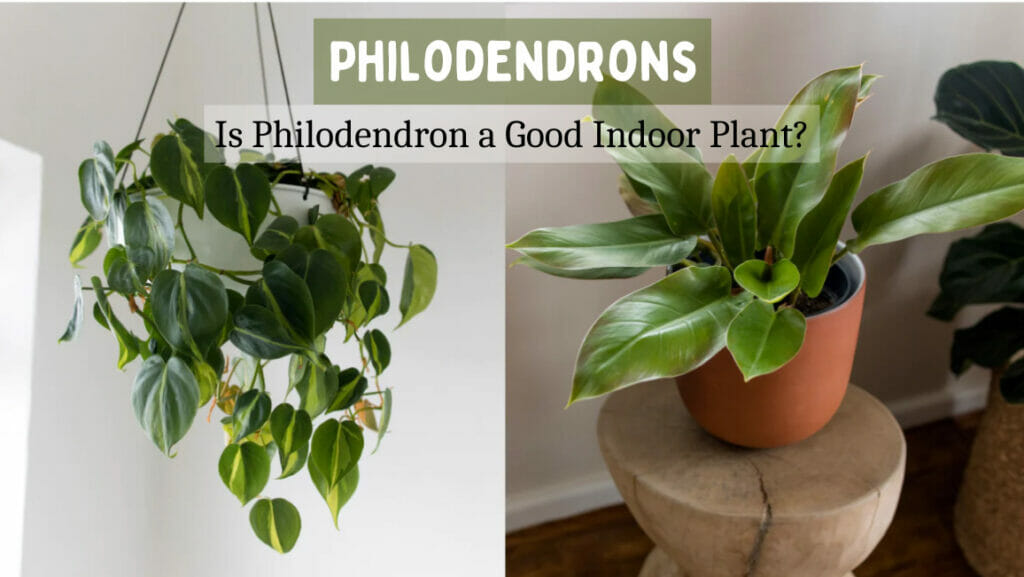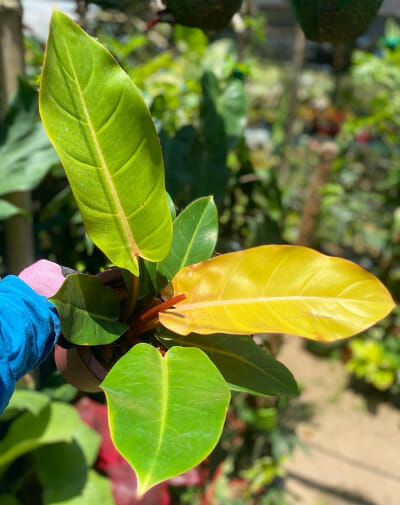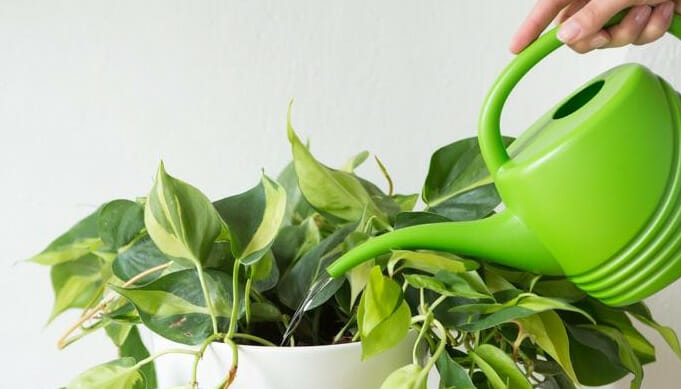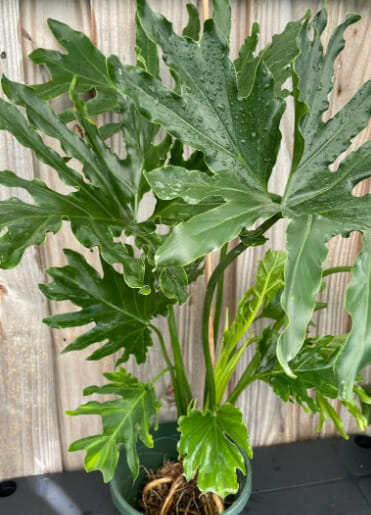Philodendrons are one of the most popular indoor plants in the world, but their popularity means they’re sometimes kept by people who don’t know how to care for them well. The problem with many houseplants, including Philodendron, is that they’re so easy to kill indoors, even by accident. But there are ways to use this plant in your home to live up to its reputation as an attractive plant capable of thriving inside the house. However, the question arises: “Is Philodendron a good indoor plant”? Let’s find out this!

1. What is a Philodendron?
Philodendrons are tropical plants with attractive leaves and stems. They’re most often found outdoors in tropical climates, but they can be grown indoors as long as you provide them with the proper care. Let’s take a look at what it takes to grow Philodendron for the home so you can determine if this tropical plant will work for your indoor garden or not.
1.1. Types of Philodendron:
Philodendron has various varieties that can be used as indoor plants. However, they are categorized into two types:
Climbing: They are usually small leaves with different shades of green in heart shape. The rootlets along the length of the stem help the plant to climb any vertical surface nearby. Climbing philodendron makes amazing indoor plants as they beautify the space in hanging pots with their fresh color and attractive shapes. Some common varieties of climbing philodendron are:
- Heartleaf Philodendron
- Brazil Philodendron
- Velvet Leaf Philodendron
- Silver Sword Philodendron
- Philodendron Lemon Lime

Upright: This non-climbing type has large green leaves with thick stems. Their leaves can grow quite big, taking up space indoors. If you have enough space, upright varieties make a bold statement indoors. Some common varieties of climbing philodendron are:
- Xanadu
- Green Congo Philodendron
- Philodendron bipinnatifidum (Selloum)

2. Characteristics of Philodendron as an Indoor Plant:
If you’re looking for a plant that is easy to care for and doesn’t require a lot of light, then Philodendron might be the plant for you. Philodendron is a hardy plant, which means it can withstand some neglect.
Philodendron has many characteristics that make it a good indoor plant.
- Easiest to Care For
This point pretty much sums up your question is Philodendron a good indoor plant? One of the reasons Philodendron is often recommended as a houseplant is that it is straightforward to care for. It tolerates low light and can go weeks without being watered, making it ideal for those who sometimes forget to water their plants. If you’re looking for a low-maintenance plant that will still look good, Philodendron may be the plant for you.
- Air Purifier
In this day and age, we are constantly surrounded by harmful toxins and chemicals. Indoor plants can help combat this issue by naturally purifying the air and making it healthier for us to breathe. Philodendron is one type of plant that is particularly good at this, as it can remove formaldehyde from the air. Formaldehyde is a common indoor pollutant, so having a philodendron in your home can make a big difference in your air quality.
2.1. Toxic Traits of Philodendron
Lately, there’s been a lot of talk about the benefits of keeping plants in the home. Some say that plants can help purify the air, while others claim they can boost your mood and productivity.
But before you go out and buy a philodendron for your home, there are a few things you should know. Though some people consider this plant an excellent indoor plant because it is relatively low maintenance, you might want to think twice before adding one to your space.
One issue with philodendrons is that they produce a natural substance called oxalic acid which can be very toxic if ingested or breathed in. Oxalic acid is the main ingredient in many household cleaning products! If you have a philodendron in your home, keep it away from children and pets so that nobody accidentally ingests any of the leaves.
And if you plan on bringing one into your house, try not to touch any part of the plant other than its leaves–the leaves contain fewer toxins than other parts of the plant (such as the stem).
3. How to Care for a Philodendron?
Philodendrons are easy to care for and low-maintenance plants. However, a few things to keep in mind if you’re thinking about adding Philodendron to your home. The first thing is that Philodendron does need more water than other plants because it tends to dry out quickly. It also needs indirect sunlight instead of direct sunlight, so make sure you put it somewhere with a lot of natural light.
3.1. Sunlight:
To thrive, indoor plants need the right balance of light. Too little light and they will become leggy; too much light and they will get sunburned. Philodendron is a tolerant plant that can adapt to different light levels, making it a good choice for indoor gardening. However, some things to keep in mind when growing Philodendron indoors.
The first thing to consider is the amount of sunlight your windows receive. If you don’t have many windows or live in an area with less sunlight (such as the Northwest), you may want to supplement your lighting with artificial lights. Lighting needs also depend on whether or not you have other houseplants nearby. While philodendrons prefer less direct light, they grow well near other plants such as ferns, rubber trees, and begonias, which prefer more indirect light exposure.

3.2. Water:
When watering your Philodendron, the best rule is to let the top couple of inches of soil dry out between watering. If you’re unsure whether or not your plant needs water, stick your finger in the ground. If it feels dry several inches down, it’s time to give your plant a drink. Be careful not to overwater your Philodendron, which can lead to root rot.

Keep in mind the symptoms of overwatered and underwatered Philodendron:
- Over-watering Philodendron:
When you overwater your Philodendron, the leaves will start to yellow and wilt. The stems will also become mushy and soft. You may see brown or black spots on the leaves, and mold may begin to grow. Your plant will become weak, and it may eventually die.
- Underwatering Philodendron
When you underwater your Philodendron, the leaves will start to yellow and wilt. The stems will also become soft and limp. You may see brown or black spots on the leaves, and they may eventually fall off. If you under-water for too long, your plant will start to produce smaller leaves, and new growth will be stunted.
3.3. Other Care Tips:
Most philodendron plants are easy to care for and thrive in various conditions. The soil should be moist but not wet, like a well-wrung-out sponge. Too much water will cause the roots to rot, while too little water will cause the leaves to droop or curl up. Here are a few tips on how to take care of your philodendron plant.
When you transplant your Philodendron, choose a pot at least two inches larger than the original pot it came in. Be sure to fertilize regularly with organic fertilizer, following the instructions on the package. You may also want to consider pruning the foliage by cutting off the ends of long vines.
Finally, give your Philodendron a general look every week or so for any signs of pests and fungus. If you spot any problems, spray them with an organic insecticide according to the directions on the label.
4. List of Popular Species
1. Philodendron Hederaceum: This is the most common type of Philodendron found in homes. It has heart-shaped leaves and can climb up to 20 feet high.
2. Philodendron Erubescens: Also known as the blushing Philodendron, this plant has red stems and glossy green leaves. It can grow up to 10 feet tall. The Blushing Philodendron needs to be grown under lights or with a lot of sunlight if it’s indoors.
3. Philodendron Bipinnatifidum: Leaves are long and narrow and usually have an irregular shape.
4. Philodendron Bipinnatifidum variegated: Leaves, which have white stripes running through them, are often seen on these philodendrons plants.



Conclusion
Philodendrons are great houseplants and are very easy to care for. You will see them flourishing if you take proper care of their light and water requirements. However, there are certain things to consider before buying any philodendron. These plants released oxalic acid that may not suit everyone.
We hope this article provides a detailed insight into the question, “is Philodendron a good indoor plant? Please visit our website for more articles.
